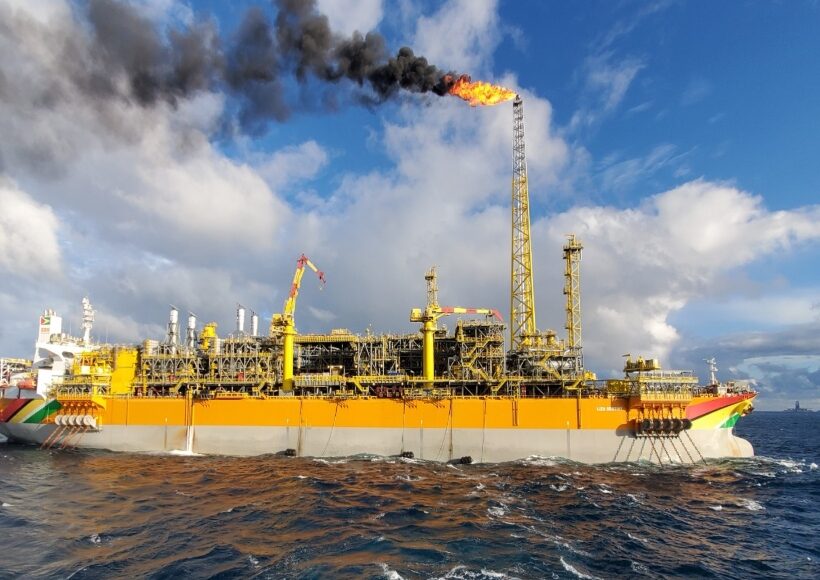ExxonMobil Guyana Limited (EMGL) has taken a significant step towards environmental responsibility by releasing a Request for Information (RFI) for the supply of air quality monitoring stations to potentially safeguard the region’s air quality as it continues to operate in the prolific Stabroek Block offshore Guyana.
In EMGL’s bid to establish air quality monitoring stations throughout Guyana, it was noted that these stations serve a dual purpose: three of them will focus on comprehending Guyana’s baseline air quality, while one to two stations will assess potential onshore air quality impacts resulting from the FPSOs (Floating Production Storage and Offloading vessels).
Currently, Exxon has two FPSO vessels in operation offshore – the Liza Destiny which is being used in the Liza Phase One development and Liza Unity which is being used in the Liza Phase Two development. Together, they are currently producing approximately 400,000 barrels of oil per day. Also, there is a third FPSO that will soon come on stream, the Prosperity FPSO which will service the Payara field in Exxon’s third development.
It should be noted that the scope of this RFI includes the deployment of five air quality monitoring stations; ensuring these stations meet air quality monitoring station siting, data availability, and data quality requirements aligned with United States (US) Environmental Protection Agency (EPA) standards. To facilitate this project, EMGL outlined a three-phase approach.
In the initial phase, the selected supplier will provide site selection criteria, recommend suitable siting areas, secure all necessary approvals and permits, develop a list of pollutants to be monitored, negotiate siting arrangements with land and facility owners, and ultimately obtain the final siting approval from the Guyana EPA.
The second phase involves the design and installation of long-term monitoring shelters with a lifespan of five or more years. The supplier will also execute a plan for constructing these shelters, including import, installation, setup, and data collection.
The final phase focuses on planning, operating, maintaining, validating, and educating. The supplier will develop and implement a comprehensive maintenance plan, including project management, health and safety measures, routine field operations, data management, data validation (QA/QC), quarterly performance audits, and maintenance tasks. Additionally, they will establish a website for continuous public sharing of the collected data, providing essential background information for public understanding. Training local resources and personnel, publishing QA/QC’d air quality monitoring data near-real-time to a public website, and providing data summaries to EMGL each quarter are also part of this phase.
EMGL also emphasized the importance of local content in their strategy. Contractors are required to demonstrate their awareness of the Local Content Act (2021) during the bid process and outline their preliminary local content strategy. These requirements aim to support Guyanese suppliers, subcontractors, and the local workforce, aligning with EMGL’s commitment to the Guyanese community and environmental responsibility.
It will be interesting to see how the company incorporates these stations into its drive to maintain good air quality in its Guyana operations and its environmental stewardship.
It is worth noting that flaring, which is the controlled burning of natural gas during oil production, has been a topic of concern and scrutiny in the oil industry worldwide, including in Guyana, especially in Exxon’s operations. ExxonMobil and its partners have faced some criticism regarding its flaring, with some claiming that it may damage Guyana’s air quality.
Flaring is typically used during startup and shutdown of production facilities, maintenance, and other operational activities. While it is sometimes necessary for safety reasons and operational efficiency, excessive or prolonged flaring can have adverse environmental and social impacts, including air pollution and greenhouse gas emissions.
Environmental organizations and local communities in Guyana have raised concerns about the environmental impact of flaring in the region and have called for stricter regulations and increased transparency in reporting flaring activities.
It’s important to note that ExxonMobil and its partners have made efforts to reduce flaring and minimize its environmental impact. They have implemented various measures and technologies to capture and utilize natural gas that would otherwise be flared. Additionally, they have committed to working with local authorities and stakeholders to address concerns related to their operations, including flaring.













